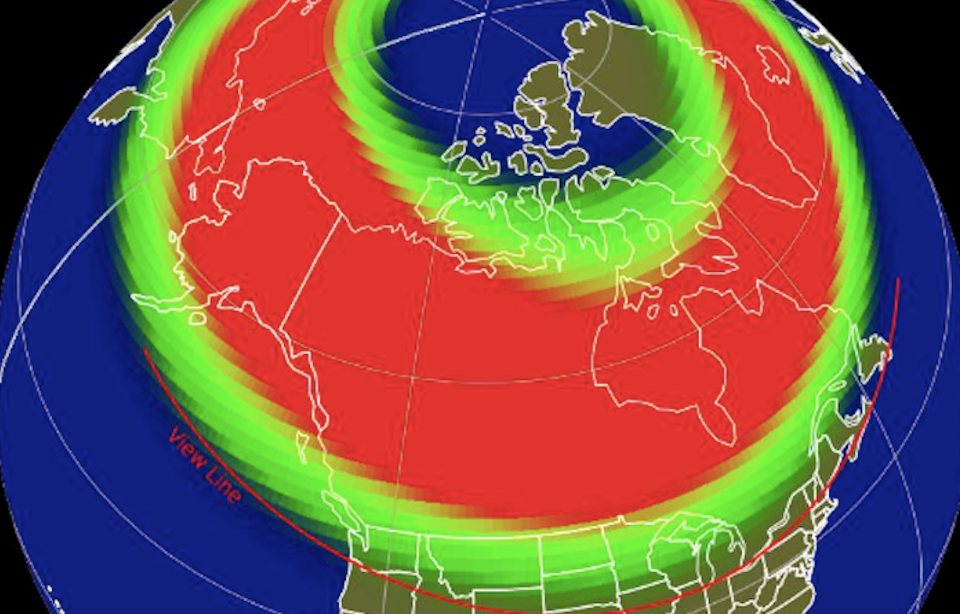Metro Vancouver residents have several opportunities to see the aurora borealis over the coming days, but some wet weather may impede local viewing conditions.
The National Oceanic and Atmospheric Administration (NOAA)'s Space Weather Prediction Center has issued G1 to G3 (minor to strong) geomagnetic storm watches for Thursday (Oct. 3) through Saturday, due to the arrival of a coronal mass ejection (CME) from the sun that was observed on Wednesday.
The NOAA aurora borealis forecast shows the same likelihood (35 per cent) for geomagnetic storms on all three days.
The University of Alaska Fairbanks (UAF) shows high auroral activity on Friday, with active displays possible overhead from Yellowknife to Juneau, Alaska to Edmonton to Thunder Bay, Ontario. They may also be visible low on the horizon from Seattle to Chicago to Boston and Halifax (see slide two).
The university's online aurora monitor map shows what regions the aurora's green glow will likely reach and other areas where it is less likely. Additionally, there is a brief description below the map of the aurora activity on that particular day. You can switch to other days to see the forecast, too.
According to the UAE's map, the aurora's haunting green glow won't be visible overhead in Vancouver. Skywatchers will need to look low on the horizon to observe the display.
Northern lights viewing opportunities in Metro Vancouver
Locals have two more opportunities to view the dancing lights after Friday.
The UAF shows high auroral activity again on Saturday, with displays possible in the aforementioned locations, including low on the horizon in Vancouver (see slide three).
Sunday provides a third opportunity to view the aurora, although the activity isn't expected to be as strong. The UAF's map shows that the green glow may be visible low on the horizon again in Vancouver but it won't extend down to Seattle. This means the Lower Mainland is the furthest the glow will extend (see slide four).
The Vancouver weather forecast includes a variety of weather in the coming days. V.I.A.'s Downtown Centre Weatherhood station shows a high of 16 C and a low of 9 C with a mix of sun and cloud on Thursday but rain is expected on Friday. Since the UAF's forecasts are based on Universal Time Coordinated (UTC) time, they are roughly seven hours ahead of Vancouver.
Environment Canada's online cloud prediction tool for astronomical purposes shows when the sky may clear to determine the ideal aurora-viewing conditions.
Locals recently captured green and purple hues across the Lower Mainland when the aurora put on a spellbinding display in mid-September. The colourful manifestation was visible to the naked eye overhead in locations across the region.
Stay up-to-date with hyperlocal forecasts across 50 neighbourhoods in the Lower Mainland with V.I.A.'s Weatherhood.



